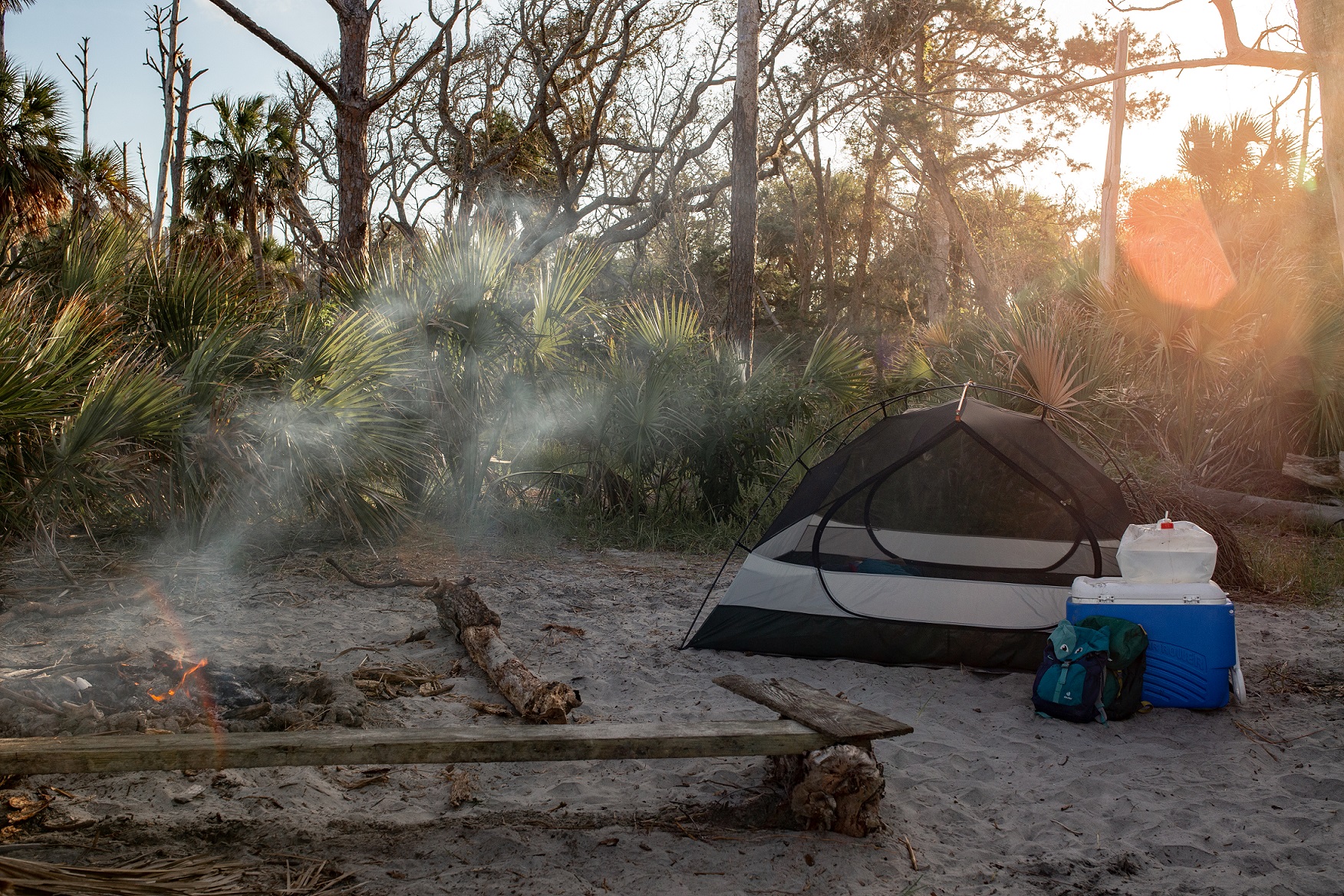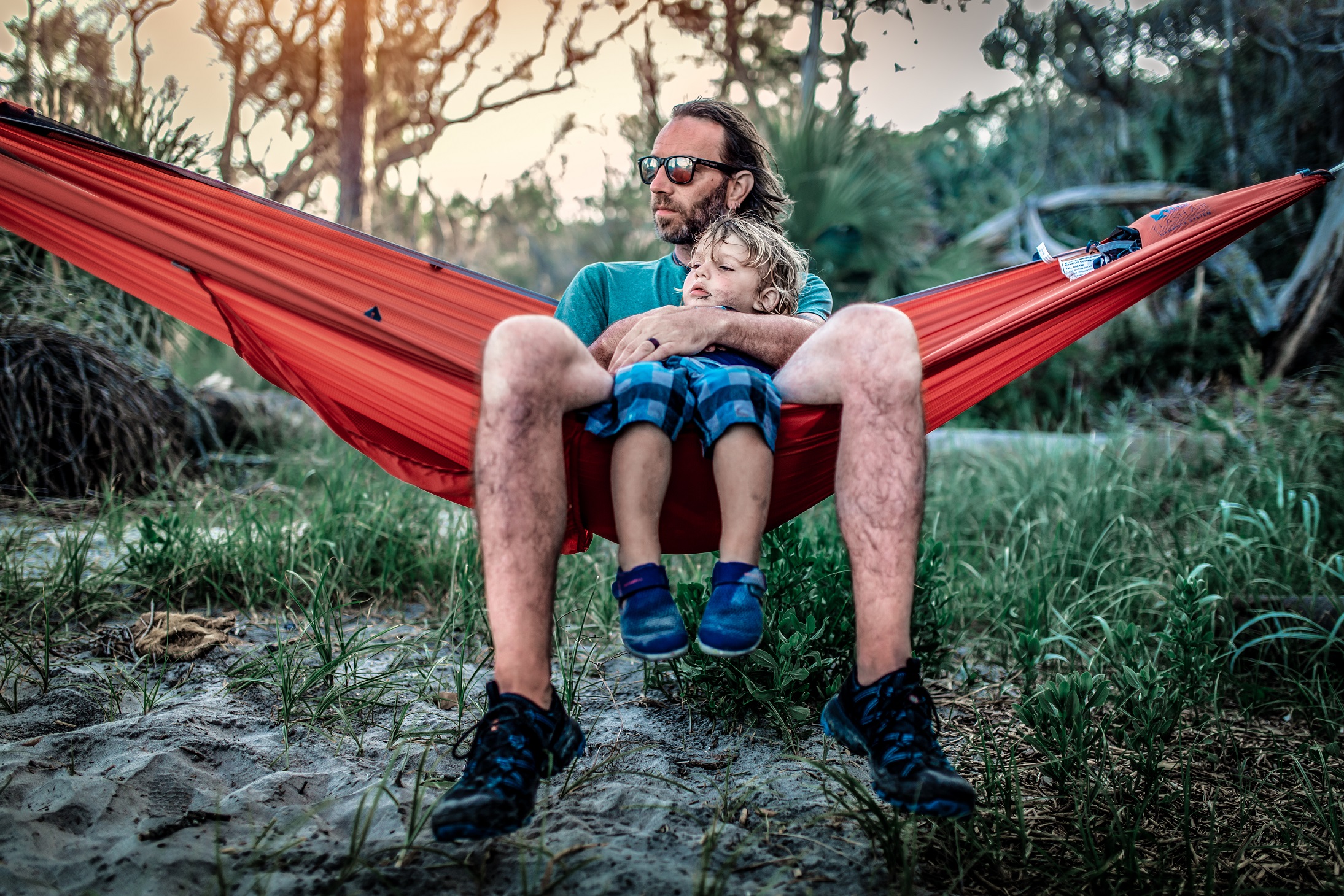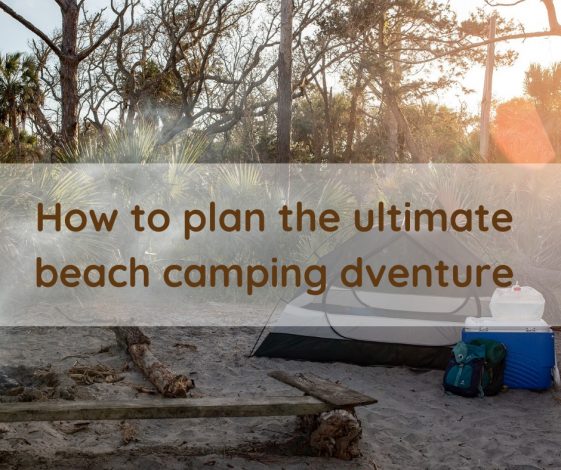How to plan the ultimate beach camping adventure
Children's laughter ringing out while they build sandcastles. The sea breeze blowing against your skin. That hypnotizing sound of the surf that seems to melt troubles away. The beach may not be famous for its hiking trails, but there are still plenty of reasons to head there for a day (or seven), and soak in the coastal version of the outdoors. But what about heading there for the night? Rather than getting a hotel or renting a vacation home, combining a love of camping with a love of the beach is a great way to truly extend your time on the shore.
Beach camping is not always easy (sand in your tent, anyone?), but for anyone looking to go a little more off the beaten path, it is usually more affordable than hotels, keeps you connected to nature during your entire stay, and can give you access to beaches so uncrowded you may even have the place to yourself. It also affords the chance to see thousands of stars over the ocean, to really become familiar with just how different a coastal landscape can be outside of the tourist towns, and, most importantly, to create lasting memories with family and friends.


 Written and photography by Stephanie Jacobson.
Stephanie is a photographer, freelance writer and adventure mama to two little explorers. When she is not behind a camera or editing pictures, she is camping, hiking and learning how to backpack with her family and documents her adventures at whimsyandwildernessphoto.com. On the rare occasion you find her at home, she is probably drinking coffee, working in the garden or watching “Lord of the Rings” and dreaming about hiking one day in New Zealand.
Written and photography by Stephanie Jacobson.
Stephanie is a photographer, freelance writer and adventure mama to two little explorers. When she is not behind a camera or editing pictures, she is camping, hiking and learning how to backpack with her family and documents her adventures at whimsyandwildernessphoto.com. On the rare occasion you find her at home, she is probably drinking coffee, working in the garden or watching “Lord of the Rings” and dreaming about hiking one day in New Zealand.

Where to go
In my experience, beach camping falls into two main categories: large, frontcountry campgrounds that are RV-accessible and are usually set back from the shore, and primitive, dispersed camping in areas that may only be accessible by backpacking or kayaking in. When looking for a place to stay, consider what type of camping is best for your family. Do you want to be right on the beach, even if it involves a lot more effort to get there? Or are you okay walking back half a mile or more to your campsite if it means you can drive right up to your picnic table? Once you know what type of campsite you're looking for, it's time to pick a place! Here are some starting points on where to search for the perfect place to set up camp:- Look for any state or national parks that offer beach camping, such as Acadia National Park in Maine or False Cape State Park in Virginia.
- Camping search engines such as thedyrt.com and hipcamp.com offer pictures and reviews and are especially good if you're looking for something with fewer crowds.
- Check tourism websites or travel blogs based in the coastal area you want to go to gain insider tips.
- Ask your community! Even if you live in a landlocked state, you may know people who vacation at the beach or have an online network filled with great suggestions.
When to go
Once you've decided on a location, find out if it requires a reservation and when the most popular times are during the year. With coastal property in high demand, reservable campsites often book well in advance, and tourist season may extend into early spring and late fall, or into winter if you're looking further south. Even if you're a seasoned camper, if you've never set up camp at the beach before, you may be surprised at some of the additional aspects to consider while planning. If you're in a place that allows camping directly on the shore, be aware of how high the tide rises -- especially if you're setting up camp at low tide. It may be a good idea to wait to set up your tent until you're absolutely certain you're above the tide line. Be sure to check tidal charts before heading out and know when high and low tides will be during your stay, since, depending on where you're going and how you get there, the tides may mean the difference in your campsite being accessible or not. Weather at the beach can be extreme. In addition to the threat of hurricanes at certain times of year, there are fewer trees to block the wind or provide shade. So should you camp in summer, you have an increased risk of sunburn, dehydration and heat exhaustion or heat stroke. Even if the forecast calls for moderate temperatures, direct sunlight combined with sun reflecting off the ocean can lead to a lot more exposure than a camping trip in the mountains. Also, nights can get cold! This is when talking to locals or checking with tourism offices can come in really handy and help you know when to plan your beach camping trip.What to pack
If you've been camping before, your gear list will look pretty familiar. You'll need a place to sleep, something to eat and safety items, along with a few extras to make your trip to the beach a lot more comfortable. Here is a list that includes both your camp basics and some beach-specific items:- Tent
- Single, double or kids’ sleeping bags
- Pack ‘N’ play (if you need)
- Food and storage items
- Water and coffee (if you need)
- First aid kit
- Hygiene supplies
- Cooking equipment/supplies
- Eating utensils
- Clothing (layers are key!)
- Flashlights or headlamps
- Tool kit – shovel, utility knife, extra batteries, duct tape, cord/rope, mallet, trash bags
- Books and toys (especially sand toys), bubbles, glow-in-the-dark necklaces
- Warm blankets for snuggles around the campfire (only if your campground allows a fire -- many oceanfront campgrounds don't!)
- Canvas folding chairs
- Extra long, spiral or weighted tent stakes, if you'll be setting up camp on loose sand
- Sunscreen and/or UPF-resistant clothing, hats and towels
- A sun shelter of some sort if your tent will be more than a short walk from the shore
- Cornstarch or baby powder to help get sand off skin -- this will be a lifesaver when those little hands reach for snacks!
- Life vests or floaties
- Hammock for relaxing

What to do
Maybe for grownups, the idea of laying back and sunbathing with a good book is all you need for a perfect beach itinerary. But whether you're a family of seasoned beach bums or your kids are seeing the ocean for the first time, they'll want to lie down and be still about the same amount they always do -- which is probably never. Fortunately, there are plenty of things to occupy kids, and for most of them, you won't have to travel far from your tent. Playing in the sand, building sandcastles and collecting seashells are a great way to both pass the time and create some amazing memories of bonding as a family. Just remember that Leave No Trace applies to seashells as well; in fact, in many areas, removing them is illegal. Walking along the shore is great and gives toddlers and new walkers large swaths of flat, soft ground to run around on. And when the tide is out, older kids will enjoy looking for tide pools and may be surprised at some of the sea creatures they might see (we found a live starfish and horseshoe crab on a recent trip!). And depending on which coast you're on, watching the sun rise or set over the ocean is an experience that all ages can appreciate. Be sure to check with park rangers or the local tourism office for trails if you want to do some hiking or need information on flora and fauna unique to the coastal climate. Many state and national parks also offer ranger-led activities (including the Junior Ranger Program) if you want something a little more structured or educational. Whether you're in an RV park in a tourist town, on a remote island you can to kayak in to, or somewhere in between, there is a beach camping trip for every camper's style. The typical dirty feet of camping will be replaced with sand and everyone will end up a little more sun-kissed by the end of the day, but camping at the beach is a great way to experience a loved activity in an entirely new way -- and to come home with a lot of fantastic memories, and the whole family asking, "When can we go back?" Have you tried beach camping? If yes, what's your favorite thing about beach camping? Let us know in the comments below!Read more:
- How to plan for camping in summer with kids
- How to have a budget-friendly camping adventure
- Helpful camping hacks for camping with kids
 Written and photography by Stephanie Jacobson.
Stephanie is a photographer, freelance writer and adventure mama to two little explorers. When she is not behind a camera or editing pictures, she is camping, hiking and learning how to backpack with her family and documents her adventures at whimsyandwildernessphoto.com. On the rare occasion you find her at home, she is probably drinking coffee, working in the garden or watching “Lord of the Rings” and dreaming about hiking one day in New Zealand.
Written and photography by Stephanie Jacobson.
Stephanie is a photographer, freelance writer and adventure mama to two little explorers. When she is not behind a camera or editing pictures, she is camping, hiking and learning how to backpack with her family and documents her adventures at whimsyandwildernessphoto.com. On the rare occasion you find her at home, she is probably drinking coffee, working in the garden or watching “Lord of the Rings” and dreaming about hiking one day in New Zealand.
Related Content




Comments